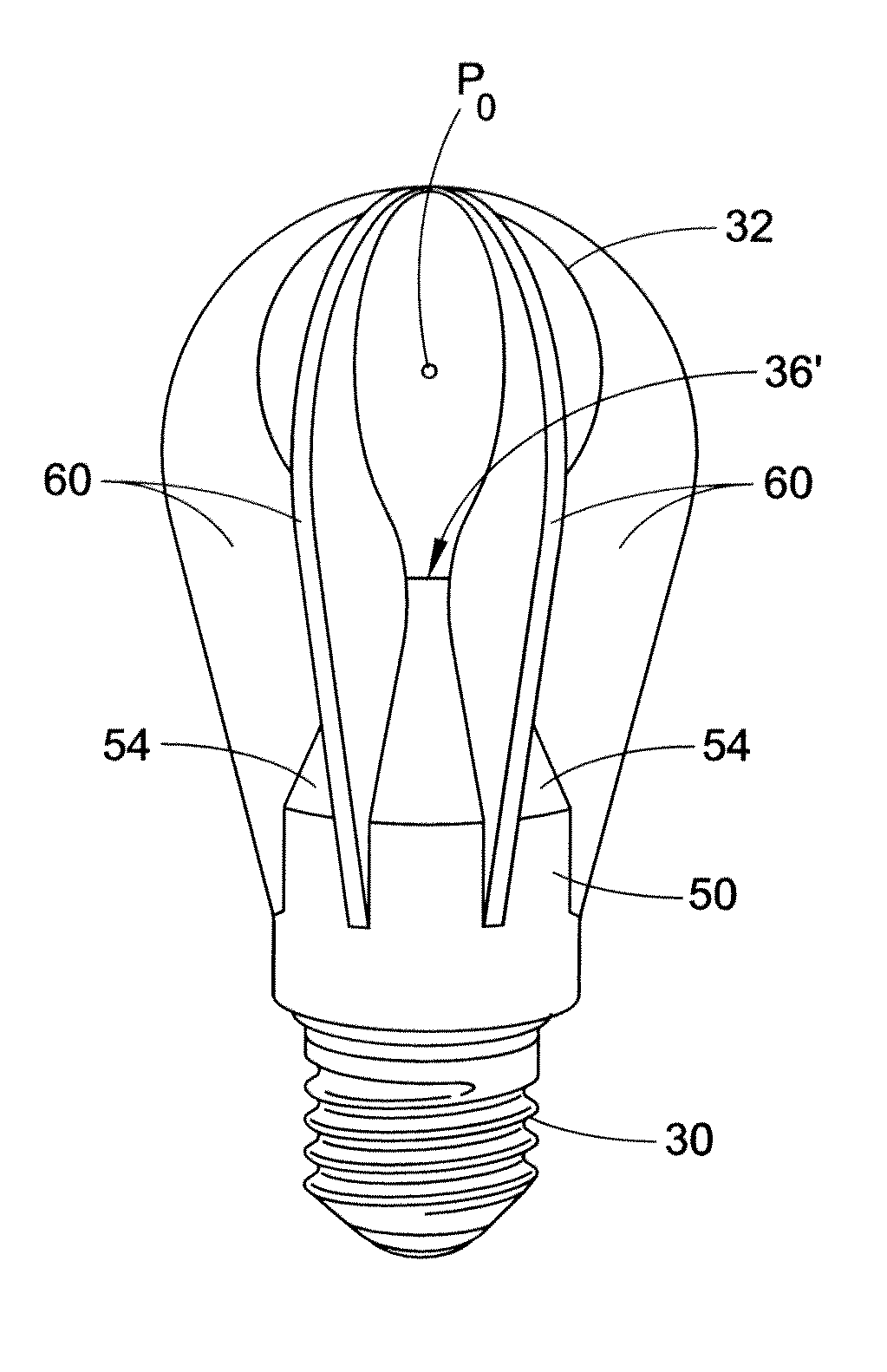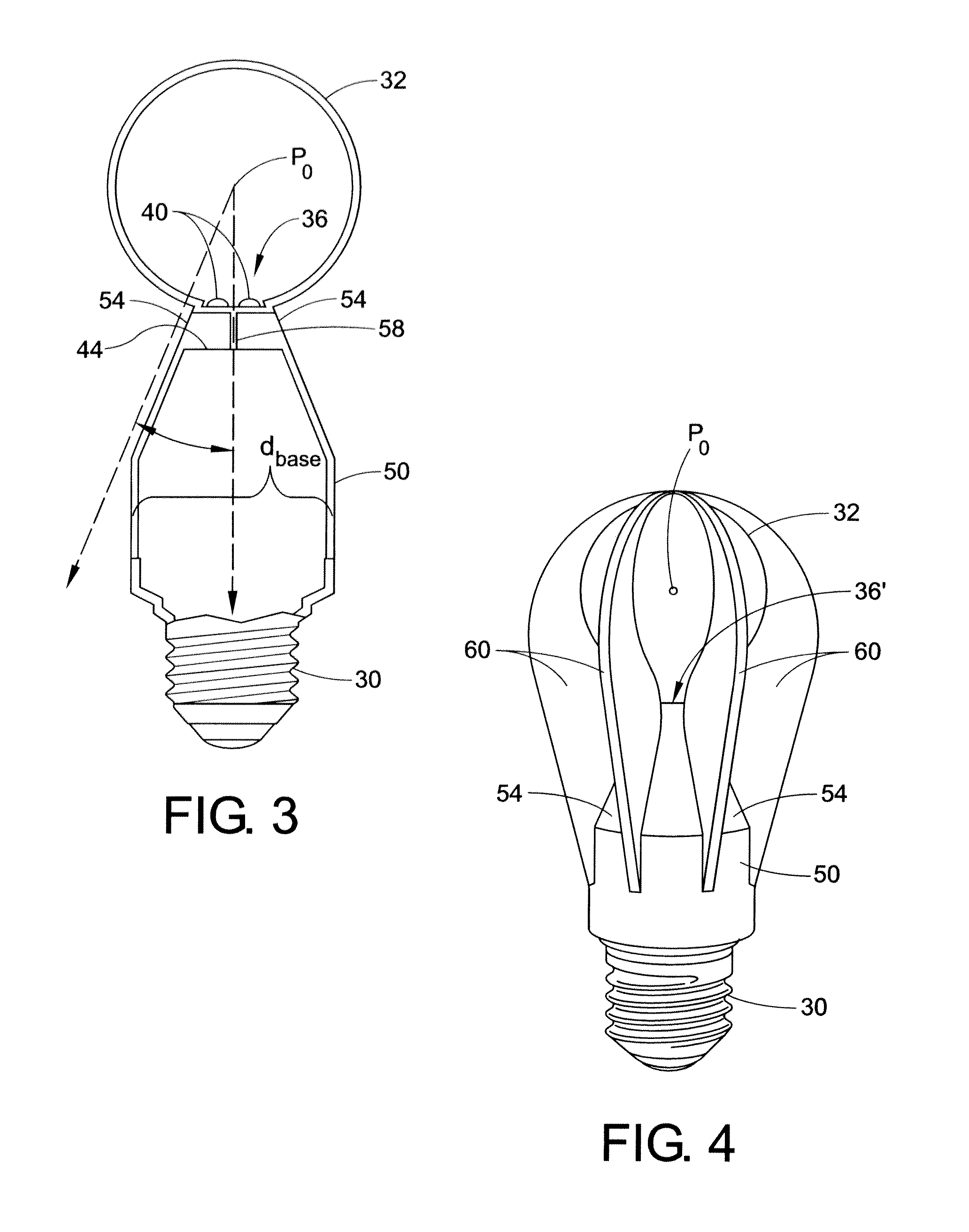Transparent thermally conductive polymer composites for light source thermal management
a technology of thermal management and transparent thermal conductive polymer, which is applied in the direction of discharge tube luminescnet screens, semiconductor devices for light sources, lighting and heating apparatus, etc., can solve the problems of poor color quality, acquisition cost, and warm-up tim
- Summary
- Abstract
- Description
- Claims
- Application Information
AI Technical Summary
Benefits of technology
Problems solved by technology
Method used
Image
Examples
Embodiment Construction
[0031]The present disclosure is directed to solving the weight, size and cost problems of thermal management in LED and OLED lamps and lighting systems, while simultaneously avoiding light blockage, by providing the relatively high thermal conductivity of heretofore optically opaque polymers in an optically transmissive polymer, and incorporating the design of the optically transmissive polymer into the LED or OLED lamp or lighting system. This solution utalizes polymer composites filled with a relatively low density of high thermal conductivity carbon nanotubes such that the thermal conductivity of the composite polymer is comparable to that of aluminum, while the optical transmission is comparable to that of clear glass, so that the composite polymer may be used as heat fins and thermally conductive optical elements.
[0032]With reference to FIG. 2, an LED based lamp includes a planar LED-based Lambertian light source 8 and a light-transmissive spherical envelope 10 in a configurati...
PUM
 Login to View More
Login to View More Abstract
Description
Claims
Application Information
 Login to View More
Login to View More - R&D
- Intellectual Property
- Life Sciences
- Materials
- Tech Scout
- Unparalleled Data Quality
- Higher Quality Content
- 60% Fewer Hallucinations
Browse by: Latest US Patents, China's latest patents, Technical Efficacy Thesaurus, Application Domain, Technology Topic, Popular Technical Reports.
© 2025 PatSnap. All rights reserved.Legal|Privacy policy|Modern Slavery Act Transparency Statement|Sitemap|About US| Contact US: help@patsnap.com



